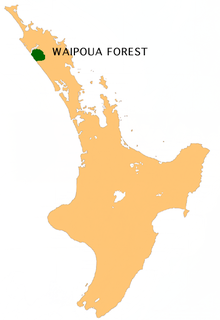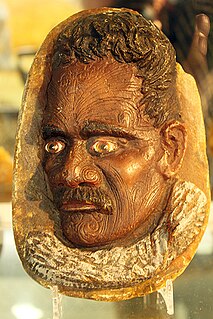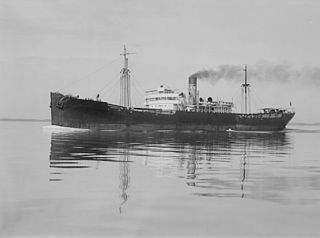Related Research Articles

In polymer chemistry and materials science, resin is a solid or highly viscous substance of plant or synthetic origin that is typically convertible into polymers. Resins are usually mixtures of organic compounds. This article focuses on naturally occurring resins.

Agathis australis, commonly known by its Māori name kauri, is a coniferous tree of Araucariaceae in the genus Agathis, found north of 38°S in the northern regions of New Zealand's North Island.

A scow is a type of flat-bottomed barge. Some scows are rigged as sailing scows. In the 19th and early 20th centuries, scows carried cargo in coastal waters and inland waterways, having an advantage for navigating shallow water or small harbours. Scows were in common use in the American Great Lakes and other parts of the U.S., in southern England, and in New Zealand. In Canada, scows have traditionally been used to transport cattle to the islands of New Brunswick's Saint John River. In modern times their main purpose is for recreation and racing.

Agathis, commonly known as kauri or dammara, is a genus of 22 species of evergreen tree. The genus is part of the ancient conifer family Araucariaceae, a group once widespread during the Jurassic and Cretaceous periods, but now largely restricted to the Southern Hemisphere except for a number of extant Malesian Agathis.

Waipoua Forest is a forest, on the west coast of the Northland Region of New Zealand's North Island. It preserves some of the best examples of kauri forest remaining in New Zealand. It is notable for having two of the largest living kauri trees, Tāne Mahuta and Te Matua Ngahere.

Tāne Mahuta, also called God of the Forest, is a giant kauri tree in the Waipoua Forest of Northland Region, New Zealand. Its age is unknown but is estimated to be between 1,250 and 2,500 years. It is the largest kauri known to stand today. It is named for the Māori god of forests and of birds.

Kauri gum is a fossilised resin extracted from kauri trees, which is made into crafts such as jewellery. Kauri forests once covered much of the North Island of New Zealand, before Māori and European settlers caused deforestation, causing several areas to revert to sand dunes, scrubs, and swamps. Even afterward, ancient kauri fields continued to provide a source for the gum and the remaining forests.

The Eupnoi are a suborder of harvestmen, with more than 200 genera, and about 1,700 described species.

The Phalangiidae are a family of harvestmen with about 380 known species. The best known is Phalangium opilio. Dicranopalpus ramosus is an invasive species in Europe.

Phalangioidea is a superfamily of the harvestman suborder Eupnoi with five recognized families and more than 1,500 species.
The Siamese Kauri is a kauri tree growing in Kauri Grove, about 10 kilometres south of Coromandel township in the north-east of the North Island of New Zealand. The tree gains its name from the conjoined lower trunk that the two trees share. It grows in the Kauri Grove, one of the few remaining stands of mature kauri on the Coromandel Peninsula. It is about 500 metres off the 309 Road, and is accessed by a 30-minute walking track.

SS West Elcajon was a steel-hulled cargo ship built in 1918 for the United States Shipping Board's World War I emergency wartime shipbuilding program.
Opilio lepidus is a species of harvestman in the Phalangiidae family. In 1937, members of the species were found in Lankaran, Azerbaijan.
Cristina is a genus of harvestmen in the family Phalangiidae.

Rhampsinitus is a genus of harvestmen in the family Phalangiidae.

Kauri dieback is a forest dieback disease of the native kauri trees of New Zealand caused by the oomycete pathogen Phytophthora agathidicida. Symptoms include root rot and associated rot in a collar around the base of the tree, bleeding resin, yellowing and chlorosis of the leaves followed by extensive defoliation, and finally, death.

The Square Kauri is an estimated 1,200 year old kauri tree in the Coromandel Range on the Coromandel Peninsula, New Zealand. It is the 15th largest kauri on the peninsula
References
- ↑ Joel Hallan (ed.). "Phalangiidae Species Listing". Biology Catalog. Texas A&M University . Retrieved December 29, 2010.